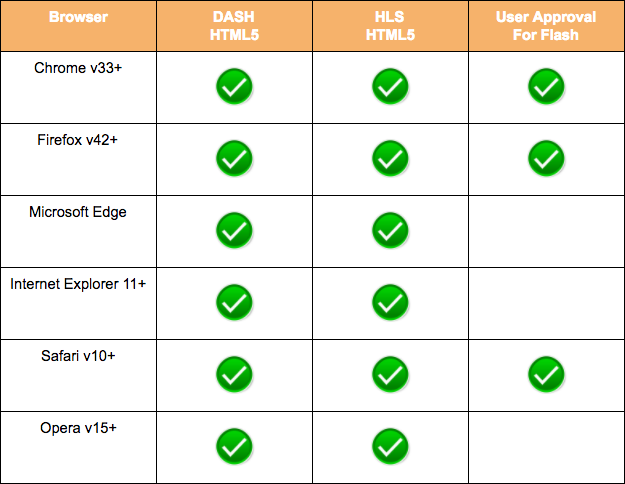Like Neil Sedaka sang so famously, breakin’ up is hard to do. We became so reliant on one another. We’ve invested time, money and heart into this relationship - but it’s irrevocably broken now. It’s time to go our separate ways. Flash, we became dependent on you as a foundational technology for the massive growth of streaming video over the past several years, but new devices came into the market, with an entirely new set of needs, requirements, and performance characteristics and you aren’t enough for us anymore. Surely you’ll recall the Thoughts on you that the late Steve Jobs shared in 2010.
Now nearly seven years later, the end of days is coming - at least as a driving technology for the adoption and mass consumption of video on every screen. That’s a big deal. But what is even more important is the impact to all the many tendrils that touch all streaming video that you’ve powered over the years.
If this is ‘new’ news to you as a media brand or video publisher, read on. Red lights are flashing and the klaxons just sounded The good news is that we’ve been working on solutions for this massive change for the better part of this year. But let’s explore what is happening and why.
For the better part of 2016, technology companies have been gearing up to shift from Flash to HTML5 in web browsers for interactive elements. Flash has also been the most common platform through which web video has been consumed for the past several years. HTML5 is an alternative, standards-based solution for this function and supported by companies including Microsoft and Google. It supports the same multimedia elements as Flash but without the litany of security issues and battery consumption problems. As the year has progressed, more web developers have started to use HTML5 instead of Flash.
A forcing function lies ahead too, as a number of web browsers have begun preventing the native use of Flash - including Google Chrome, which will give up full support by the end of 2016 and is already doing so with the latest build of the browser (v55) which is shipping now. Firefox and Microsoft’s Edge browser are following suit too - creating a situation where you the user will have to click on every Flash element you want to enable to run or play video on your desktop. All this means that your web experience in-browser is smoother, and there have been a precipitously lower amount of browser crashes observed leading up to this year’s close.
What the breakup will mean to you - and your video
Yeah yeah yeah, you say. Plugin smchugin. I can watch video just fine. If you enjoy clicking on something every time you load the page, sure - you’re right. Realistically though, this initiative will lead to lighter, more secure and efficient web experiences, faster load times and will save your battery life a little more. Fair tradeoff.
If you are a media brand or video publisher and have already made the shift to a video player built using HTML5/JavaScript and have removed your reliance on Flash or other plugins, you are golden, future proof and get the gold star award for today. If you haven’t, now is the time to pay attention to those flashing lights and sounding klaxons. You. Need. To. Modernize.
There are other benefits to modernizing your video players. HTML5 provides support for new foundational technologies that enhance the multimedia experience on desktops and devices. Two such specifications are Media Source Extensions (MSE) and Encrypted Media Extensions (EME). MSE makes video more efficient and ubiquitous where EME provides security enhancements and advantages in digital rights management (DRM) that no one will want to miss out on. Here’s a matrix to help you sort how various browsers will handle this going forward.
Cross browser compatibility can be achieved in all modern browsers with a good HTML5 Player without the need for Flash. The Brightcove Perform HTML5 player can help you navigate a move to HTML5 and remove reliance on Flash, while ensuring you're future proof for any hurdles ahead. The Perform team is continuously evaluating enterprise changes, industry changes and in turn, improving our player to ensure that compatibility is all encompassing. Today, players don't just play video. They are also tasked with security and DRM, serving ads that support monetization strategies, providing alternate languages and subtitles and many more complex functions required to deliver the most compelling video viewing experiences in the market today.
Flash was great in its day and played a pivotal role in how video grew and evolved. As with most technology though, a better solution comes along to nudge the older one out of the way. Switching - and breaking up - can be hard to do. We’re ready to help you with that transition.


